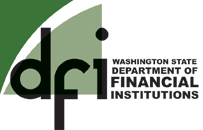
Spring 2019 Newsletter
BSA/AML Risk Assessment for Money Services Businesses (MSBs)
An effective anti-money laundering (AML) program is required to be “commensurate with the risks posed by the location and size of, and the nature and volume of the financial services provided by, the money services business.” 1
All MSBs (including check cashers, money transmitters, currency exchangers, issuers and sellers of monetary instruments, and providers and sellers of prepaid access) must perform a risk assessment specific to their operations in order to develop a risk-based AML program.
MSBs should evaluate the unique risks posed to their business and its operations. The risks identified will vary depending on the MSB. The money laundering risk categories that should be identified and assessed by the MSB include products and services, customers, geographic locations, operations, and any other risks associated with its business. These risks should be assessed with a focus on the areas of the MSB’s business that management believes pose the greatest risk. 2
An adequate risk assessment will allow the MSB to tailor its AML program to its particular circumstances. As products, services, and operations change, so should the assessment of related risks. Performing the risk assessment enables MSBs to better identify and mitigate risks and gaps in AML controls.
BSA/AML risk assessments are reviewed for adequacy during all MSB examinations performed by the Washington State Department of Financial Institutions.
For more information on BSA/AML risk assessments for small MSBs, please see the references and resources provided with this article.
References and Resources:
2 Bank Secrecy Act/Anti-Money Laundering Examination Manual for Money Services Businesses

 We Want Newsletter Feedback:
We Want Newsletter Feedback: